Nils Hadamovsky
fine art
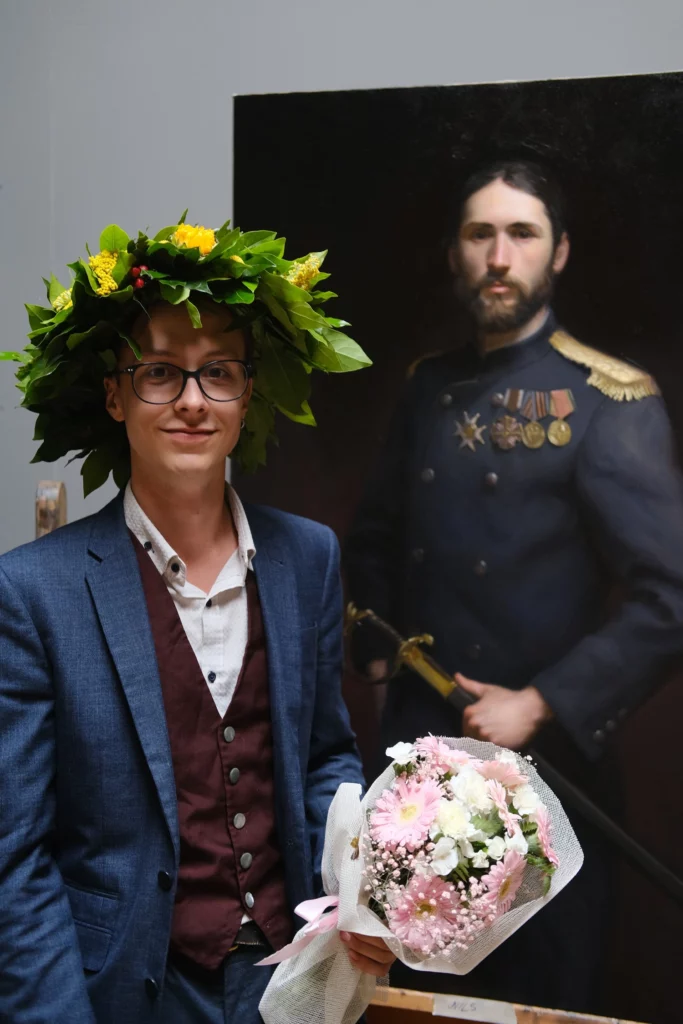
Nils Hadamovsky
fine art

You’ll find all the details about commissioning a painting, including the process and what to expect.
I was born in Germany. When I was three, my parents decided to sail around the world, so for the next five years, I sailed around the world. After that, I went to school in Greece and then Germany. Later, I attended boarding school in the UK for high school. After that, I came to the Florence Academy of Art, where I just finished my studies.
Painting Process for My Final Project at the Florence Academy of Art Size: 130×80 cm, oil on canvas, life-size.
For me, it starts with an idea of a certain feeling I want in my painting. I was looking for a serious representation of a military man who is at the same time melancholic and shows his inner child. Next, I need to find a model that represents what I am looking for; for me, the models are a significant part of a successful painting.
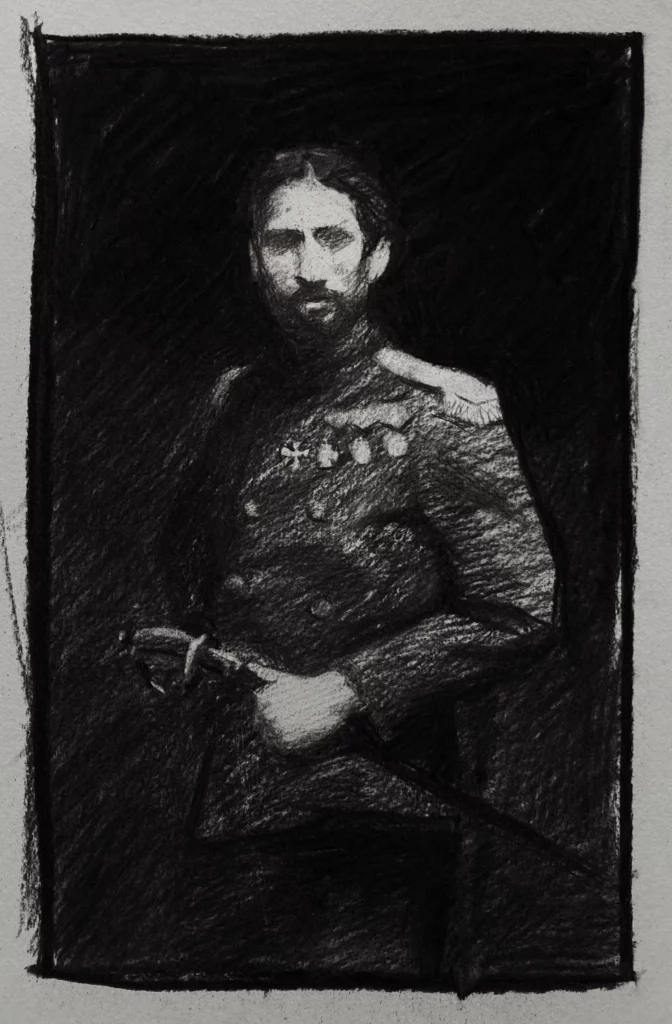
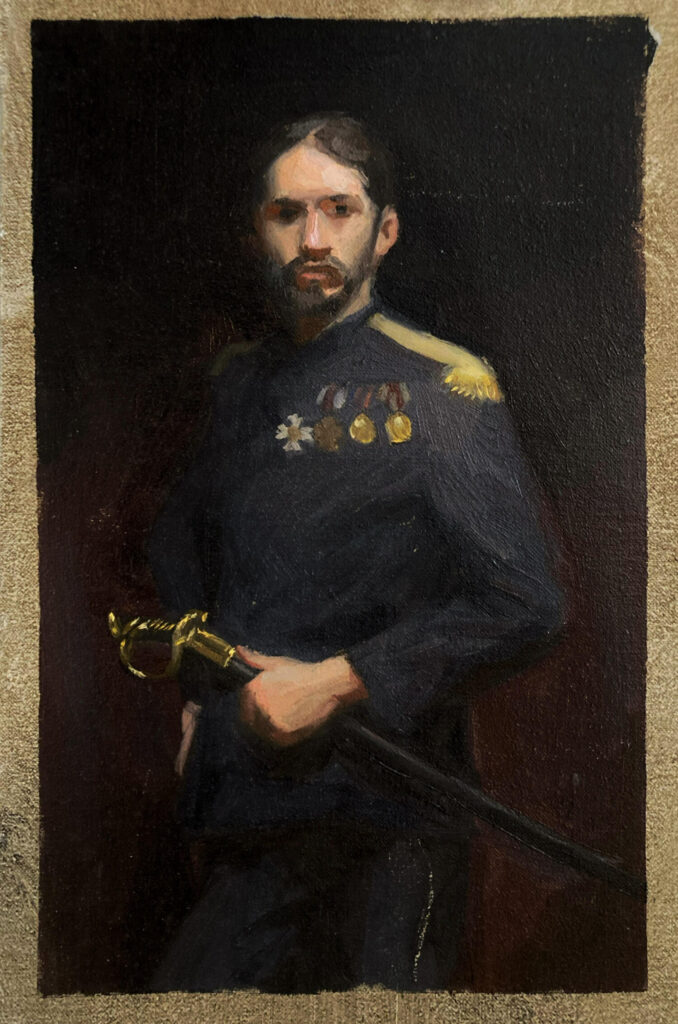
1. Once I had everything planned, I started with some sketches in charcoal, working to find the best composition with just simple values. Next, I did a colour sketch to spot any problems in the composition.
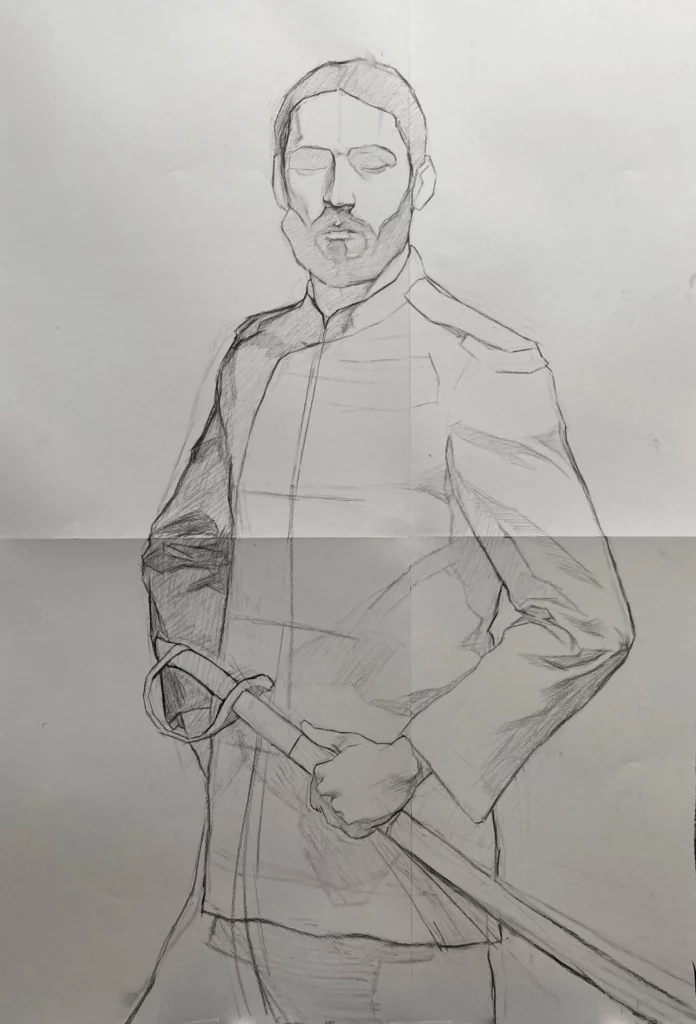
2. Then, I began sketching the entire composition in life size. This allows me to move things around and find the exact canvas size that best suits the painting. In this stage, it’s important to be flexible and keep adjusting lines until I achieve the best composition.
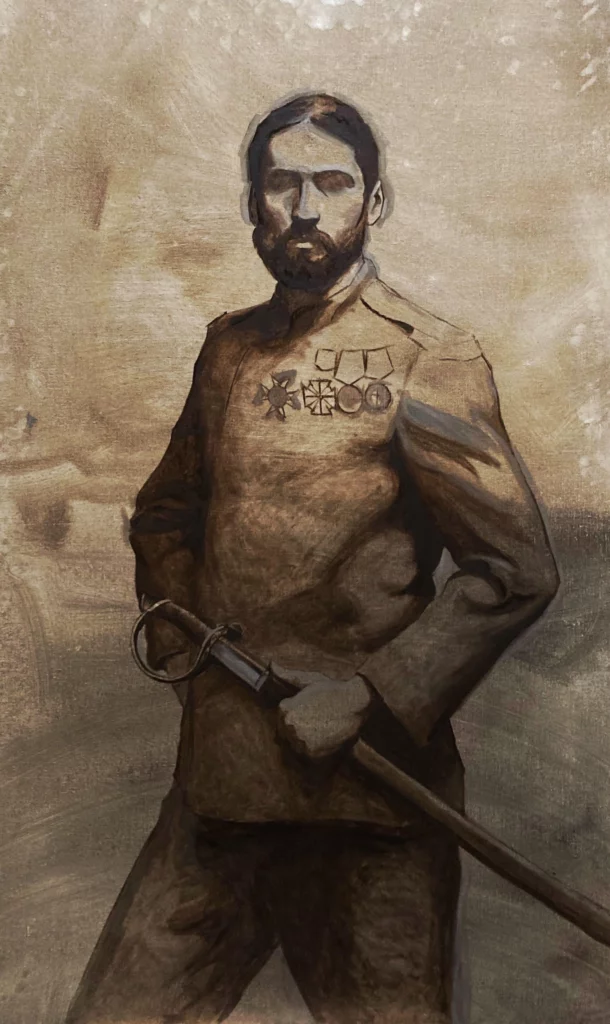
3. I transfer my drawing onto the canvas with raw umber. After that, I start mapping out the shadows and light, striving to make the drawing accurate.
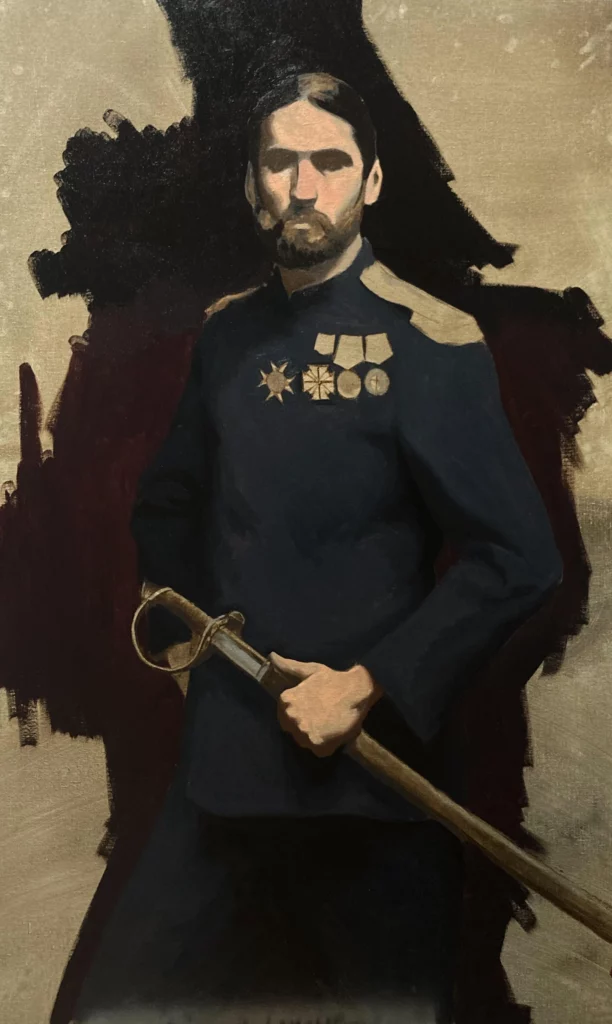
4. Once satisfied, I start with colour, trying to keep it simple with three values for the skin and clothing. I cover the canvas as quickly as possible to see the overall impression and assess the values in relation to each other. I hold back from any details, focusing only on the big impression.
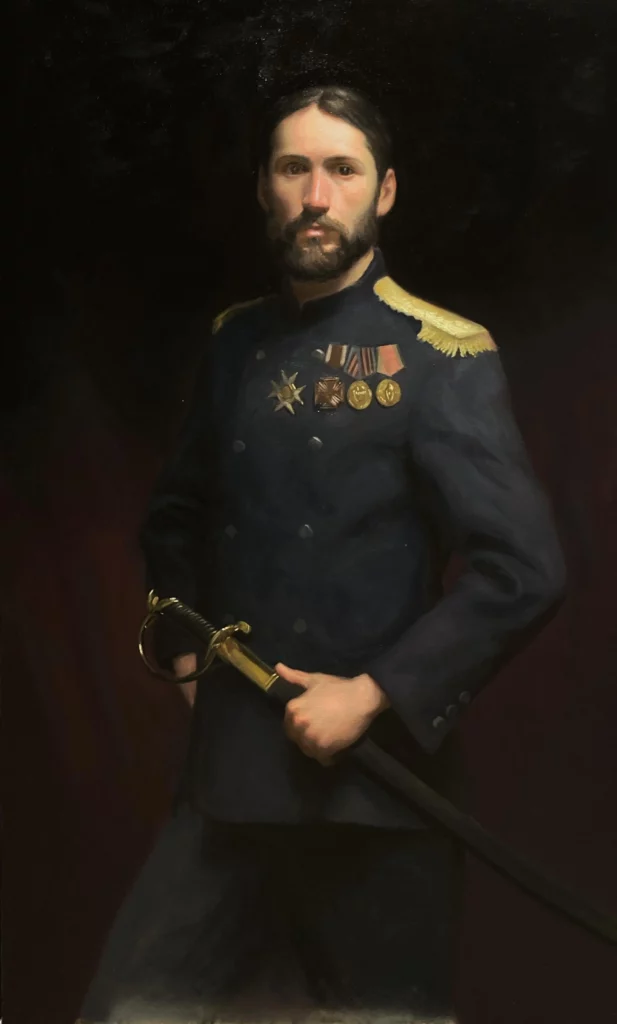
5. It’s important to work slowly towards details. I gradually add more accuracy, focusing on temperature and texture. This is the stage where I might repaint an eye three times or more.
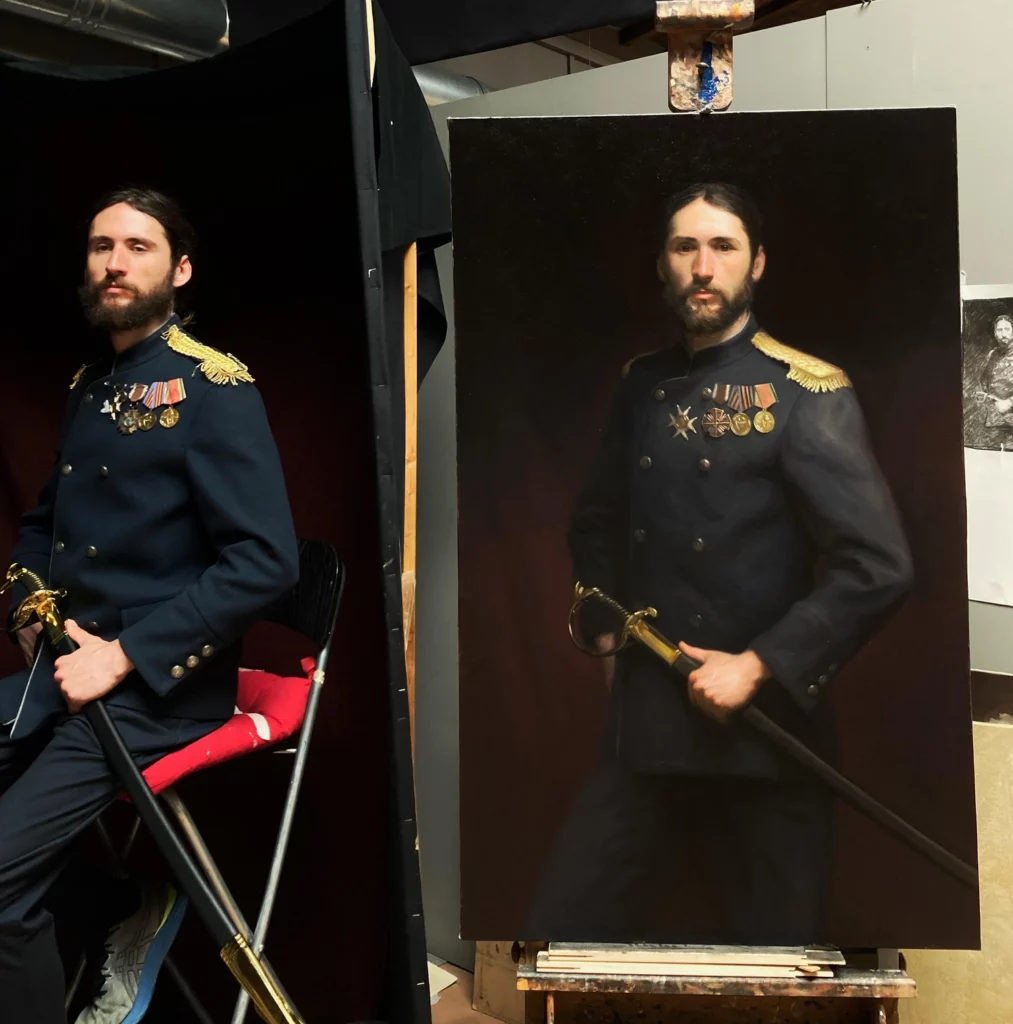
6. At this point, I try to finish the painting, working on subtle details like making the eyebrows softer. I enjoy playing with warm shadows and green halftones, balancing the subtleties of cold and warm tones. I slightly push some areas into the shadows and light, glazing parts down, like the sword, to direct focus. I achieve this also by increasing contrast in the face.

7. There is always a moment when I realise I am working backwards, undoing previous progress. It’s challenging to recognize, and even harder to decide whether to push through or finish the painting. When I reach that point, I give myself two days to continue. During that time, I look for improvements, but each time I consider a change, I ask myself if it truly enhances the painting or if I’m getting lost in details. In my opinion, too many details can break a painting. After two days, I stopped painting, even if I thought more could be done. I might return to it later, but mostly I don’t.

